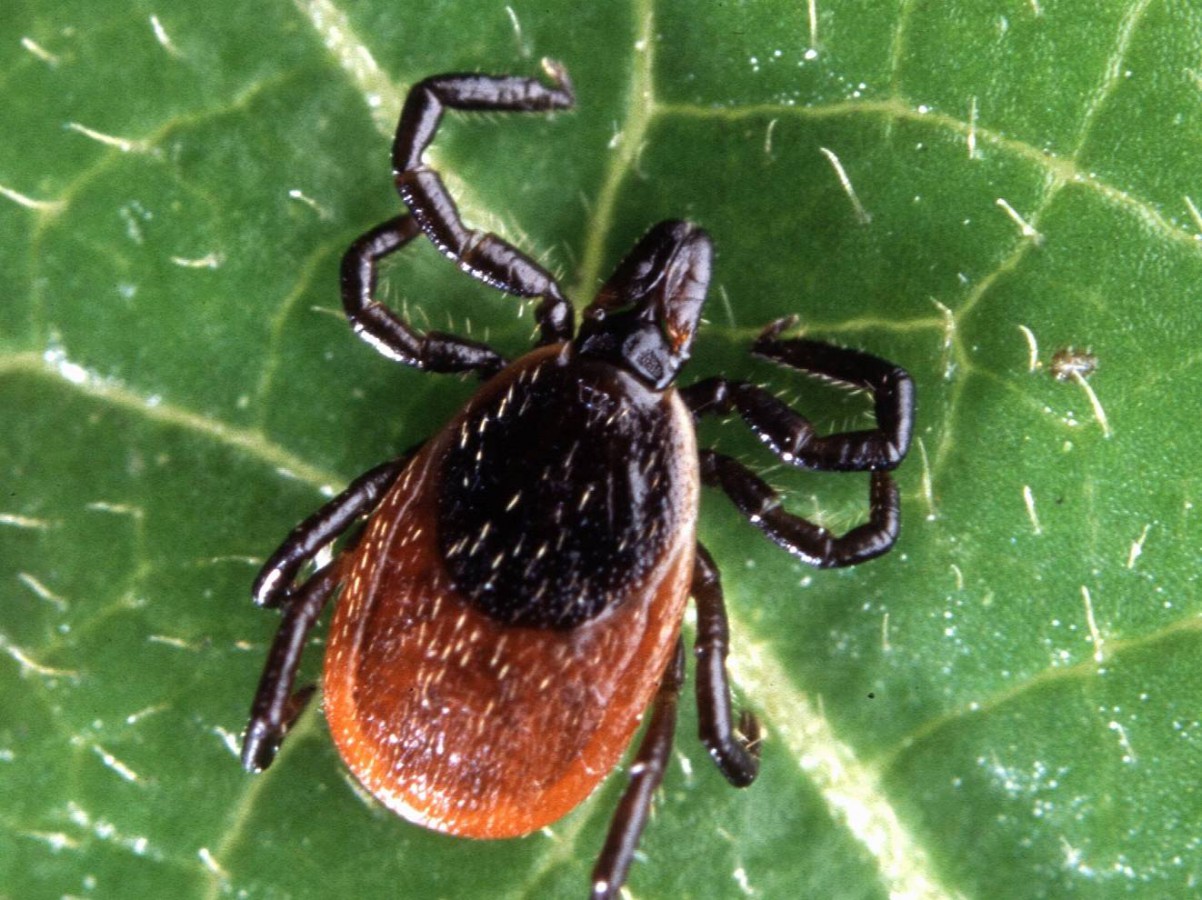The black-legged or deer tick (Ixodes scapularis) is a tiny arachnid with an ancient, if dubious, heritage: its ancestors were already sucking the blood of, and transmitting pathogens to, dinosaurs in the Cretaceous Period. Although it is best known for carrying Lyme disease, it is also a vector for several other viral, bacterial, and parasitic illnesses.
For such a primitive animal, the black-legged tick has a very complex life cycle. After the egg hatches in spring, the larva attaches to its first host, a bird or small mammal and very often a white-footed mouse, which appears to be the main reservoir for Lyme disease. Unlike other animals, such as opossums, mice do not effectively remove ticks by grooming; furthermore, since their reproductive strategy is to breed early and die young, their immune systems have not evolved to be particularly robust and they cannot rid themselves of the Lyme pathogens. After three to five days of feeding, the larva drops to the ground, where it overwinters. The next spring, it molts into a nymph and attaches to a second host, which may be a wild or domesticated mammal or a human being. It is at this stage that it is most dangerous because not only is it likely to be infected with pathogens, but it is also tiny enough to escape all but the most careful inspection. The blood-engorged nymph then drops to the forest floor and molts once again. In autumn, the adult feeds on a third and final host, usually a white-tailed deer. The fully fed female drops to the ground a final time, overwinters, and lays eggs the next spring.
The tick seems to be moving into new areas and its population seems to be increasing, though the reasons for these changes are complex and poorly understood. Upstate New York is becoming ideal tick habitat as farmlands revert back to forest and new subdivisions carve into the countryside. A more fragmented landscape has fewer small predators and more mice. In addition, small mammals such as skunks and raccoons, along with white-tailed deer, are attracted to so-called edge habitats, places where forests intersect with meadows, fields, or lawns.
The arachnid favors moist, shady areas, dries out easily, and becomes inactive when the temperature drops below freezing (though it is unaffected by subzero temperatures, thanks to antifreeze-like proteins). As our region becomes warmer and wetter, both the tick and its preferred hosts will thrive. Both mice and deer feed on acorns; this year’s acorn crop, like last year’s, is projected to be large, thanks to a warm spring and abundant rainfall. Accordingly, the tick population, and the rate of Lyme disease transmission, are also projected to be large.
Scientists have observed that white-footed mouse populations go through huge boom-and-bust cycles, but the number of ticks, and the incidence of Lyme disease, only seems to increase. Evidence is mounting that the answer to this puzzle may lie in the skyrocketing population of white-tailed deer. Humans have created a perfect storm by eradicating the deer’s natural predators while at the same time turning the landscape into a smorgasbord of orchards, gardens, and crops. Deer are in far higher concentrations than they were before European settlement: in rural areas, there are between thirty and sixty deer per square mile, and several years ago in Cayuga Heights there were 125 per square mile. Such overpopulation is an immediate threat not only to human health but to forest health. In some areas, the deer have eaten all of the saplings as well as the shrubs in which songbirds nest; they remove all the tasty native forbs and leave the unpalatable exotics. A healthy forest can support perhaps twenty deer per square mile; tick populations and their associated diseases do not drop dramatically until the population is under ten deer per square mile. At this point, an aggressive deer management program seems to be the only solution. Repellants and fences only redirect the deer elsewhere and neither sterilization programs nor recreational hunting, as it is currently managed, can make a dent in the numbers of deer and the disease-laden ticks that suck their blood.


